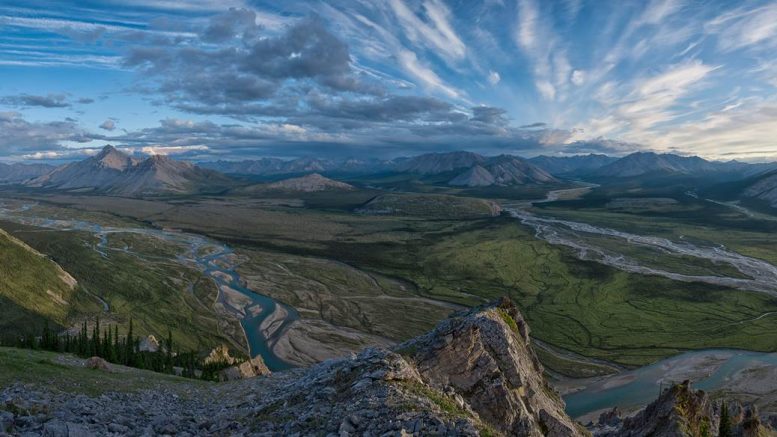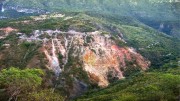First Nations have just won an important lawsuit at the Supreme Court of Canada on account that the Yukon government had tried to do an end-run on their land claim settlements.

Bill Gallagher
Readers who have followed my tracking of the native legal winning streak in Canada will be familiar with my preferred wording of “Land Rights” as the catch-all phrase whereby natives typically win in the resources sector since they have constitutionally-protected land rights that the rest of us don’t.
My message to government and industry is always the same: realize that natives are resource gatekeepers in Canada and work them into the project as the key local players that they are.
In this instance, the Yukon Party under Premier Darrell Pasloski — in office from 2011 to 2016 — proposed in November 2012 to reverse environmental protection measures suggested for the Peel watershed by an independent land use commission established pursuant to modern land claims agreements between the Yukon and Canadian governments and representatives of the territory’s First Nations.
The commission had recommended that 80% of the watershed be kept pristine with the rest opened for resource development. The Pasloski government wanted to reverse that equation in order to get the territory’s resource sector rolling.

Regional map showing Peel watershed boundaries in northern Yukon. Credit: Yukon government.
But planning for the Peel watershed had been ongoing for a decade, with the process governed by settled native land claim procedures.
The native side held fast to its belief that the Peel watershed was special: “It’s our university, our hospital, indeed there’s lots of activity going on there already. Our traplines, our ancestors, our thousand years of history; that’s where we go to bond and to gain back our spiritual and cultural strength.” (Chief Roberta Joseph speaking on Dec. 1, 2017, on CBC News)
There was a merging of agendas as eco-activists climbed aboard, and a sophisticated public relations machine rolled out to stop the reversal process during the litigation lead-up to the final court ruling.
The problem for the Yukon Party is that by then it had lost a number of other resource sector rulings to the native side — meaning the law respecting the on-going application of modern day land claim settlements was already well-defined.
The risk the Yukon Party ran by litigating the Peel Watershed Land Use Plan was that it might well be directed to follow its own defined process.
Perhaps that was why it turned to Bay Street lawyers to argue the case for the subsequent appeals. In court, they freely admitted in argument that the Yukon government had “erred”, “didn’t follow the process”, “accepted there was a breach of the agreement”, “stepped off the judicial path”, “failed to express sufficient detail” and “misread the agreement.”
That in turn, invited the Supreme Court to weigh-in with a series of reprimands in the final decision:
By proceeding in this manner, Yukon “usurped the planning process and the role of the Commission” (trial reasons, at para. 198). Its changes did not respect the Chapter 11 process. Respect for this process is especially important where, as here, the planning area includes First Nations’ traditional territories within non-settlement areas. As both the trial judge and Court of Appeal noted, Yukon’s conduct was not becoming of the honour of the Crown. I therefore agree with the courts below that Yukon’s approval of its plan must be quashed. (First Nation of Nacho Nyak Dun v. Yukon, 2017 SCC 58) (author’s underlining)
The underlined portion is why this ruling is important for miners, strategically-speaking, since one could be forgiven in thinking that these lands were Crown lands over which the Yukon territorial government had complete jurisdiction.
That would be mistaken, because the modern-day land claim settlements imbue the native-side with land rights to Crown lands (being their traditional lands).
Here’s the court in the same decision on how those Crown lands are to be managed:
As well, the language … must be read in the broader context of the scheme and objectives of Chapter 11 of the Final Agreements, which establishes a comprehensive process for how the territorial and First Nations governments will collectively govern settlement and non-settlement lands, both of which include traditional territories. (author’s underlining)
That “collectively govern” requirement is what the Yukon government lost on.
Today, the state of affairs can perhaps be best summed up as: Crown land isn’t what we all formerly thought it was.
A drilling company’s CEO used that line to his executive team after one of my presentations on the topic.
It’s really all you need to know in planning your access to traditional lands as part of your overall exploration strategy in Canada.
Thus, when the final appeal decision was issued on Dec. 1, the Supreme Court didn’t mince words:
Yukon must bear the consequences of its failure to diligently advance its interests and exercise its right to propose access and development modifications to the Recommended Plan. It cannot use these proceedings to obtain another opportunity to exercise a right it chose not to exercise at the appropriate time.
This means that in all likelihood a very large percentage of the Peel watershed will remain off-limits to miners.
As Chief Joseph told the CBC: “This is the outcome we were hoping for. We wanted a collaborative planning process. It was not our choice, we never wanted to go to court. But we’re prepared to work to protect the Peel watershed.”
As a strategist, I wonder how this case ever got so far?
For miners the message is clear: these natives have land rights even on Crown land, and if you want access to this land, it’s best to have them on your radar screen from the beginning.
A win like this greatly advances the land rights legitimacy of the rise of native empowerment and the overall heft of their legal winning streak. At 250 legal wins, it’s the biggest win cycle in Canadian legal history. The map of Canada is being redrawn one land rights ruling at a time!

— Based in London, Ont., Bill Gallagher is a lawyer, author and strategist specializing in the relations between First Nations, governments and resource companies.
His groundbreaking 2012 book “Resources Rulers: Fortune and folly on Canada’s road to resources” will be followed up with a new book on the same theme in the new year. Visit www.billgallagher.ca for more information and to read his blog.






Be the first to comment on "Commentary: SCC decision on Peel watershed in Yukon another win for First Nations"